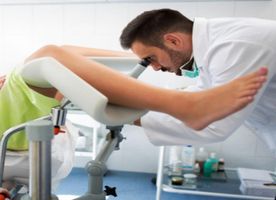Gynecologic Laparoscopy in Dubai
Search and Compare the Best Clinics and Doctors at the Lowest Prices for Gynecologic Laparoscopy in Dubai






Gynecologic Laparoscopy at NMC Royal Hospital, DIP, Dubai in Dubai, United Arab Emirates





Gynecologic Laparoscopy at Aster Cedars Hospital, Jebel Ali in Dubai, United Arab Emirates





Gynecologic Laparoscopy at Prime Hospital in Dubai, United Arab Emirates
Our partner clinics in are accredited by the following associations




































































































































No Time?
Tell us what you're looking for and we'll reach out to the top clinics all at once
WHY US?




































































































































No Time?
Tell us what you're looking for and we'll reach out to the top clinics all at once
What does the Procedure Involve?
Gynecologic laparoscopy is usually performed under general anaesthesia. Once your surgeon gives you the anaesthetic, a small tube called a catheter will be used to collect your urine. Then, your surgeon will use a small needle to fill your abdomen with carbon dioxide gas. The gas is needed to reduce the risk of injury by keeping your abdominal wall away from your organs.
A small cut in your abdomen near the belly button will be made to insert the laparoscope, which conveys images to a monitor screen. The images give your surgeon a clear, real-time view of your organs. What happens after depends on why a gynecologic laparoscopy is performed.
-
For diagnosis purposes, your surgeon might take a look and try to find any abnormality.
-
For treatment purposes, your surgeon will make other incisions to insert tiny surgical instruments. Then, the treatment is performed using the laparoscope as a guide.
When the procedure is over, your surgeon will remove all instruments and close the incisions with stitches.
How Long Should I Stay in Dubai?
If you are having a gynecologic laparoscopy to diagnose a condition, you should be able to leave the hospital on the same day. If you have the procedure to treat a condition, you may need to stay in the hospital overnight. In general, it is recommended that you stay in Dubai for 5 to 7 days following your gynecologic laparoscopy as you need to let your body recover first and attend follow-up checkups.
What's the Recovery Time?
Recovery time for gynecologic laparoscopy varies, depending on what procedure was performed. You may need to rest for a week. After diagnostic gynecologic laparoscopy, you may be able to resume all normal activities in one or two weeks. However, if the procedure is done to treat a condition, it may take 4 weeks or more until you can return to normal activities.
What About Aftercare?
Your medical team will give you instructions on how to care for yourself at home before you are discharged from the hospital. In general, you need to keep the following instructions in mind:
-
Your doctor may prescribe pain medication to ease your discomfort or antibiotics to prevent an infection. Make sure to take the medications as prescribed.
-
Rest and get enough sleep to help you recover. However, try to walk every day to boost blood flow.
-
Drink plenty of fluids.
-
If your doctor allows you, you may shower within one or two days following the surgery. However, don’t take a bath until your doctor says it’s okay.
-
Always attend the scheduled follow-up checkups.
What's the Success Rate?
Gynecologic laparoscopy is a safe procedure. It is a highly successful procedure that allows your surgeon to easily diagnose any problems and treat various conditions without having to open your lower abdomen. However, there are still some side effects and risks you need to be aware of. These include bleeding from your vagina, pain in your abdomen, nausea, tiredness, and shoulder pain, development of a blood clot, infection, and damage to other organs.
Are there Alternatives to Gynecologic Laparoscopy?
For diagnostic purposes, you can consider an ultrasound scan or MRI scan instead of a gynecology laparoscopy. Both of these procedures are non-invasive. For treatment purposes, laparotomy or open surgery can be an alternative. This involves making a large cut in your abdomen. It is usually used for bigger operations, such as a hysterectomy.
This information has been accurately sourced and verified by a medical professional for its accuracy, however, we strongly recommend you to consult with your doctor before pursuing medical procedures overseas.



